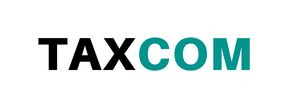
The process of making predictions based on past and present data is called Financial Forecasting. It can loosely be called financial trends. A typical example of such trends could be predicting the future revenue of the business. Businesses used this technique of economic prognoses to estimate/predict their future performance. This helps them to have a birds-eye-view of how their business might look in the future.
The primary purpose of Financial forecasting is evaluation of current and future conditions; help guide decision-makers to make the appropriate policies and decisions. Therefore, it is safe to conclude that it is a fiscal management tool that uses the past, present, and the projected financial circumstance to present estimated information.
Primarily there are two types of forecasting methods: Quantitative and Qualitative. Quantitative forecasting is further divided into various models like a straight line, moving average, time series, and linear regression. Whereas, qualitative forecasting method includes market research and the Delphi method for forecasting.
Quantitative forecasting uses a straightforward approach to generate forecasts through complex data. Essentially, quantitative forecasting deals with data such as future sales growth and tax topics rather than subject matters.
- Straight Line methods use basic math and reasonable estimates to prepare the businesses for their future. Since a straight-line forecasting method is one of the easiest to implement, it is widely used for estimating revenue growth in the future by studying the past revenue rates and increase/decrease thereof. Of course, other variables like market, domestic, national, and international policies play a vital role in these studies. But this method is effective for setting goals and making a realistic budget for moving forward.
- Moving Average is the average performance evaluator of a short term instead of a long period like monthly times frame in preference to yearly time frame. It’s used to assess revenues, profits, sales growth, stock prices, and other standard financial metrics. It helps better understand the business’s trends over time. This method can be best exploited by those businesses whose revenue is seasonal or fluctuate over time. It would highlight the best and the worst-case scenarios for the said time frame in advance, giving the companies to plan their finances accordingly.
- Time Series uses historical data to identify the patterns that can repeat themselves in the future. This enables a data-driven forecast across a range of financial metrics. It can be used where the performance is steady, like revenue growth based on last month’s revenue. Time series can incorporate even seasonal businesses.
- On the other hand, Linear Regression uses a graphical representation between two or more data points say “x” and “y” variables to chart and analyze the trend of the relationship between the two. Say, for example, if sales increase, then profits are likely to increase, creating a linear regression showing a positive correlation between them. But if, on the other hand, sales increase and profits decrease, it is indicative of other problems like rising expenses or an increased cost for per unit conversion from raw material to finished goods that is reducing the value of your company’s sales efforts.
Qualitative forecasting
- Market Research is frequently used in business to analyze different potential situations that a company might or might not face. Its popularly used for identifying the place of business, finding out the need of the hour, which could help launch a new product. Since market research has a wide range of variables involved, it cannot be held accountable for accuracy. Though more market research would yield more accurate data, the cost and time involved make it unattainable.
- Delphi Method is similar to market research. Only it collects data from the experts instead of the market. The information is usually gathered through a questionnaire that would be answered by both the outside experts and the in-house experts. This data can then be used to analyze and help form an informed opinion on the matter concerned.
Using the financial forecasting tool by the management for important decisions increases the confidence of the business stakeholders. As financial forecasting provides an in-depth understanding of the potential future events and their consequences, it may be used not to reduce the uncertainty of the future.

